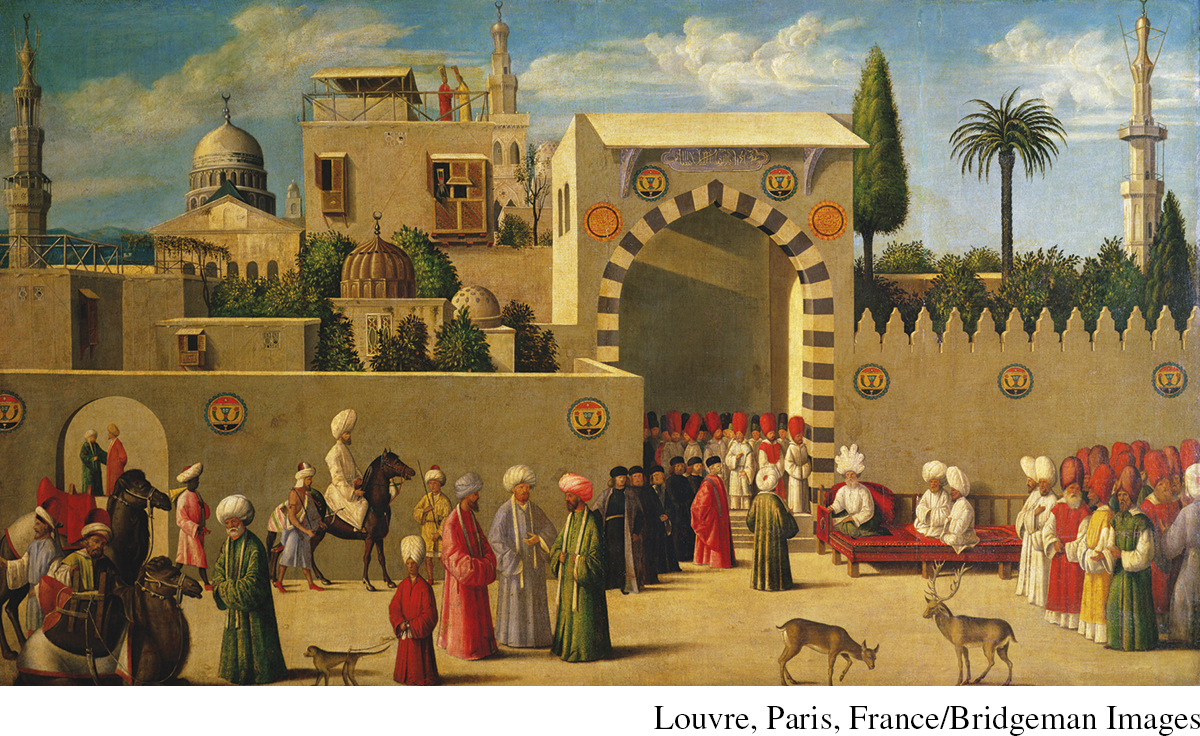12.2 The Venetian Ambassador Visits Damascus
Venice had long been the primary point of commercial contact between Europe and the East and the source of the much-desired luxury goods that its merchants obtained from Alexandria in Egypt. At that time, Muslim Egypt was ruled by the Mamluks, a warrior caste of slave origins, who had checked the westward advance of the Mongols in 1260 and had driven the last of the European Crusaders out of the Middle East in 1291. Venetian traders, however, were more interested in commerce than in religion and by the fifteenth century enjoyed a highly profitable relationship with the Mamluk rulers of Egypt and Syria, despite the periodic opposition of the pope and threats of excommunication. Thus it is not surprising that the Renaissance artists of Venice were prominent among those who reflected the influence of the Islamic world in their work. By the late fifteenth century, something of a fad for oriental themes surfaced in Venetian pictorial art.
Source 12.2, painted by an anonymous Venetian artist in 1511, expresses this intense interest in the Islamic world. The setting is Damascus in Syria, then ruled by the Egyptian Mamluk regime. The local Mamluk governor of the city, seated on a low platform with an elaborate headdress, is receiving an ambassador from Venice, shown in a red robe and standing in front of the governor. Behind him in black robes are other members of the Venetian delegation, while in the foreground various members of Damascus society—both officials and merchants—are distinguished from one another by variations in their turbans. Behind the wall lies the city of Damascus with its famous Umayyad mosque, formerly a Roman temple to Jupiter and later a Christian church, together with its three minarets. The city’s lush gardens and its homes with wooden balconies and rooftop terraces complete the picture of urban Islam.

Source 12.2 The Venetian Ambassador Visits Damascus Louvre, Paris, France/Bridgeman Images
- What impressions of the city and its relationship with Venice does the artist seek to convey?
- How are the various social groups of Damascus distinguished from one another in this painting? What does the very precise visual description of these differences suggest about Venetian understanding of urban Mamluk society?
- What does the total absence of women suggest about their role in the public life of Damascus?
- How would you know that this is a Muslim city? What role, if any, does religion play in this depiction of the relationship between Christian Venice and Islamic Damascus?
